Released: 7th February 2000
Writers: Gary Clark / Notodog / Hepburn
Peak position: #16
Chart run: 16-30-48
It was a rite of passage for our girl groups in the ‘90s/’00s to undergo a line-up change, and having scored two top 20 hits, it was Hepburn’s turn. So, would they come back stronger than ever with their third single Deep Deep Down?
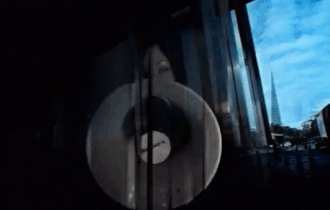
Well, considering this was Hepburn’s final chart appearance, you already know the answer to that question. But this was not an unmitigated disaster by any means. In truth, the departure of drummer Beverly Fullen didn’t exactly generate headlines (indeed, any publications that did feature the story were no doubt more interested in being able to wryly work the group’s breakthrough single I Quit into their coverage). All it did was slow down Hepburn’s momentum; by the time they released Deep Deep Down, almost six months had passed since their second single Bugs. That was an issue, particularly with their self-titled debut album having achieved an underwhelming peak of #28 in the interim. The charts were moving rapidly, and Hepburn needed to create a measurable impact this time around. A turnaround was unlikely, but not impossible. And for a group who’d managed to land their debut single on the uber-cool Buffy The Vampire Slayer soundtrack, it was worth a shot.
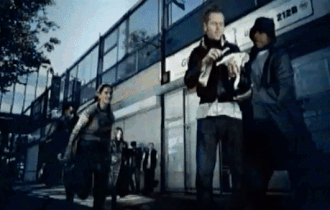
Deep Deep Down is a moodier effort than Hepburn’s previous releases. There are still elements of their trademark breezy pop-rock, like the: “Do, do, do, do…” intro delivered atop energetic guitar riffs. But very quickly the track eases into atmospheric verses, which feel relentlessly bleak: “Worried soul, do you have no place to go now, no place to settle down, this is a sad old town, but it’s a town”. If there is a glimmer of hope here, it isn’t easy to find. The song is – quite literally – about being down at the lowest of low points: “Missing man, have you fallen by the wayside, you’ve no more past to drown…”. This is about as miserable and hopeless as pop music can be; you can almost feel any sense of joy sapping away second by second.
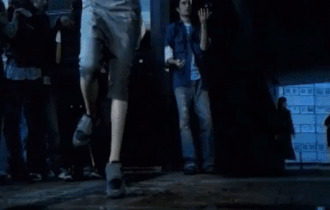
Thank heavens then, for the chorus. Because while it’s not a thematic shift (“Have you ever been down, have you ever been way down, have you ever been deep, deep down”), it is a tonal one. Singalong, jaunty choruses are what Hepburn did well, and that is precisely what they deliver here. It has a fist-pumping energy which conveys a consistent message as the rest of the song but does so in a far more gratifying manner. The thing with Deep Deep Down is that – objectively speaking – a bit of melancholy in pop music is fine. In fact, that’s what many artists traded on at the time. But it feels as if there’s a verse missing; something with a hint of a silver lining and a reassurance that things will come right again. Or maybe Hepburn just wanted to deliver a lesson on the sometimes-harsh realities of life. If that’s the case, then they really went to town!

The music video for Deep Deep Down is pretty good considering the label might have been conscious of throwing too much at it. The main gimmick sees Jamie Benson walking through various set-pieces at normal speed while the action is slowed down around her. It was the turn-of-the-century, so inevitably in places it looks noticeably green-screened (like the first one where someone is having a portion of chips knocked out of their hands), but overall, it’s an effective stylistic choice. The action is interspersed with a series of jump cuts featuring Hepburn – and assorted extras – striding purposefully. The editing of the sequences is pretty good. The only shame is that the inner city setting is a bit grey and dreary; it’s very British, but not in a particularly flattering way.
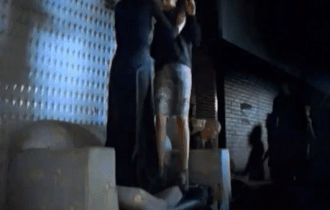
In trying to replace Beverly Fullen, Hepburn eventually added Tasha Baylis to the band. But not before first recruiting Lisa Gordon. It’s unclear when the music video for Deep Deep Down was filmed, but it seems to have been around the time when changes were still occurring. Although Hepburn are presented as a quartet on the cover of the single, there are only three of them prominently featured in the visuals. The aesthetic style hides the fact pretty well, but there are shots of the group performing together where whoever is playing the drums seems to have been intentionally obscured. If this was supposed to be a showcase for the new line-up, then it didn’t quite work out that way.
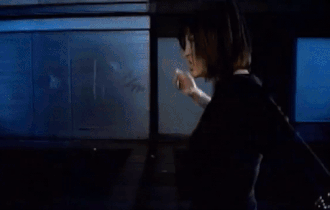
Deep Deep Down certainly wasn’t the new lease of life that would have secured Hepburn’s future. But equally, it didn’t fare all that badly; the track peaked at #16, which was consistent with their previous single. However, what it didn’t do was revive interest in the Hepburn album. Having peaked at #28 and spent just a fortnight on the chart, Columbia Records were undoubtedly keeping a close eye on it. Not least because of the type of act that Hepburn were; shifting albums and playing the live gig circuit would have been a lucrative avenue for them, but based on their commercial returns, there didn’t seem to be the demand. Even though some of their peers clung onto record deals for longer despite achieving far less, Hepburn were subsequently dropped.
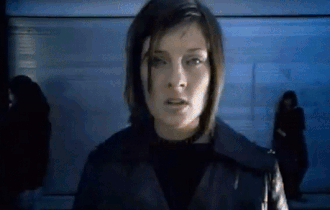
As the lead singer (and most recognisable member) of the group, Jamie Benson used the platform to attempt a solo career the following year. Alas, her biggest ‘hit’ was the slightly ironic Invincible, which peaked at #95. Whether Hepburn would ever have been accepted as a credible pop-rock act is debatable but trying to do so during the height of the bubblegum pop era was an attempt as bold as it was futile. Maybe – just maybe – a few years later they’d have been better positioned to capitalise on the direction that the charts were heading…



